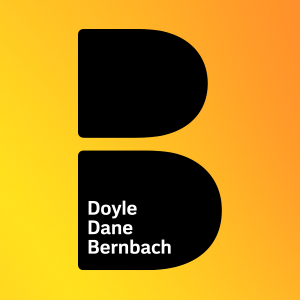
Strategists Reveal How They’re Using AI to Unlock a New Level of Insight

When it comes to rifling through research and digging into data to find gems of insight, one human brain can only do so much. But some strategists are finding that artificial intelligence is proving to be a useful tool to rattle past the surface level, obvious thoughts and get to juicier insights much more quickly, as this Harvard Business Review article suggests.
So, practically speaking, how are advertising industry planners using different AI models, such as ChatGPT and their own in-house versions, to craft better and faster strategies for clients? And what are the current shortfalls when it comes to AI-enhanced brand strategies?
Who better to ask than strategists themselves? We pitched the questions to experts from DDB, Iris Worldwide, BETC, Whalar, M&C Saatchi and more.
Dipti Bramhandkar
Executive strategy director, North America at Iris Worldwide
I primarily use ChatGPT 4 as a brainstorming partner. What I find that it’s most useful for is creating some initial perspectives on a topic, which I can then build and deepen with my own experience. The drawbacks are plentiful (lack of accuracy, sometimes bewildering responses despite repeatedly focused prompts, and frankly, a lack of creativity in style of delivery) but they haven’t daunted me. With the right focus, it has been a welcome addition to a myriad of tools I use as a strategist and thinker.
Great strategy is a combination of rigorous understanding based on data, and interpretation based on life experience, perspective, and creativity. I find that the art of ‘prompt-making’ is as useful as the content itself at times. I think about the questions I should be asking myself in terms of tackling a brief. I challenge my own biases in the way I might answer something.
When strategising, AI provides a foundation of data-driven insights, while strategists interpret these insights, integrating them with an understanding of cultural nuances, ethical considerations, and creative storytelling.
A compelling example is the use of AI in a campaign that leveraged social listening tools to identify emerging trends and sentiments among a specific demographic. This AI-driven insight enabled the creation of a highly targeted campaign that resonated deeply with this audience, leading to increased engagement and a successful outcome.
The future of AI in our industry is poised for further evolution. Expect to see more personalised advertising, real-time strategy adjustments based on dynamic data analysis, and even AI contributions to creative concept development. However, the role of people will remain crucial, particularly in ensuring ethical considerations, maintaining brand authenticity, and providing the essential creative spark and lateral thinking that AI currently can’t replicate.
Julie Quicray
Strategic planner at BETC Paris
NB: I mainly use ChatGPT (assistant), DALL-E (image generation), DeepL (translation) and sometimes Gamma (slides structure and storytelling).
So far, when out of sheer slothfulness, I tried to get ChatGPT to do my job and come up with a strategy, without any direction or vision, the results were extremely disappointing. Soulless platitudes at best, irrelevant answers at worst. AI is a powerful tool indeed but it’s just a tool. I try to use ChatGPT for what it is: a database collecting answers from the internet, an algorithm coming up with the most highly probable words, one after another, to form a coherent answer. As such, it is great to:
Make lists, all kinds of lists.
At the beginning of a strategic process, I use it to deep dive consumer barriers, pain points when it comes to adopting brands, products and behaviours. ChatGPT gives you a list of all the barriers, it’s a good way to quickly and easily map pain points
Downstream, when I already have my strategy in mind, I ask it to make specific lists to boost brainstorming sessions to inspire and explore even further. For example, I recently asked it to list 50 celebrations to inspire an activation and journey strategy.
Tell you commonplaces.
ChatGPT can easily give you the commonplaces on a subject. And that’s very useful to actually move away from them and go further than dull, self-evident facts. If I ask, ‘how to advertise yoghurt’, it’s going to come up with unimaginative angles that I can put aside, to focus on bringing something new to the table.
Image generators are similar to ChatGPT in that they provide good illustrations of collective imagery on a subject. If I search mental health, the AI always comes up with pretty dark images, hence proving mental health is a concept still intrinsically linked with depression and a strong stigma.
Find data?
My main pain point with ChatGPT is… reliability. It invents data and facts, it’s not so much about the truth. That’s why I use Assistant by scite, an AI specialised in finding the right data sourced from academic papers and research papers to make sure the data is real and reliable.
Fight blank page syndrome.
As a generator, ChatGPT can be a very good starter to write and structure strategic deliverables. A manifesto with a specific writing style, the structure of a deck, a workshop outline. It helps you provide a first start you can refine and elevate later.
AI is a first tool to unlock our creativity and do what humans do better than machines: break silos, innovate, make connections, dig deep in human experience and take responsibility for the quality of the output in front of our clients. Yes, ChatGPT doesn’t really do that.
Michael Goldstein
Head of communications strategy at DDB North America
I regularly use ChatGPT, MidJourney, Beautiful.ai and our own internal AI tool – RAND.
I rarely use ChatGPT to get to a deep insight or unique creative thought, but it is a great start to quickly get to broad insights or territories that I can then double down on or examine and cross reference to get to some gold. For comms planning specifically it helps build a fast snapshot of audience behaviours, or to help identify barriers that we want to overcome. Our own DDB AI platform, RAND, is pretty comprehensive. It's like an app store of strategy-specific AI tools, such as a ‘Trend Fetcher’, insight-starter, data pulls and other tools that help sharpen our briefs. We’re starting to see it make experienced strategists work faster and help steer junior strategists to excellence and rigour in their outputs.
My theory on AI is that eventually most agencies will have access to tools of a similar standard, especially if Meta, Google, Microsoft and the rest continue to develop and distribute their own products. So with that scenario, the only competitive advantage comes back to human inputs of creativity, original insight and empathetic and emotional insights to help guide AI tools to valuable outcomes. So, rather than feeling threatened, I’m actually really excited for agencies. We get to work on what we all came into advertising for – creativity, curiosity and deep thinking. Let the AI do the grunt work, versioning and optimisation!
James Calvert
Head of generative AI at M&C Saatchi
AI is bringing meaningful changes to productivity. But can AI get juicier insights in less time?
First let's recognise powerful creative ideas are ones that resonate with people’s real thoughts and feelings, and that these grow from inspired creative minds, embracing an insightful creative brief.
As a strategist, it's your responsibility to find, reveal and sell this insight. The Oxford Dictionary defines an 'insight' as ‘an accurate and deep understanding’.
AI for the win? It’s logical. Trained on the entirety of known knowledge. Strategists must be revealing many more accurate and deep insights at a faster pace.
But this isn’t happening.
AI gives exactly what you ask for—but not necessarily what you need. To find what you need, we must reframe what an insight ought to be. Strategists can debate what an insight is, however, I’m fond of the way Richard Storey, head of behaviour change at M&C Saatchi, puts it: “An insight is something you know to be true, but you didn’t know you knew it, until I told you."
Something unexpected, yet equally understandable at the same time. So, what's this mean for strategists?
Turn up the ‘temperature’ in your text AI, or try a high ‘chaos’ value in your image AI. Give AI room to be less precise in its outputs. Write prompts that seek counterpoints. Ask for hot takes, go against conventional wisdom. Run it many times. Iterate, see what thoughts arise. Try letting AIs talk to each other. Simulate a group discussion, in first-person, see where the conversation goes. It might not be where you expect.
Counterintuitively, the way strategists can extract juicier insights from AI might be from hallucinations. And after all, isn’t seeing things differently a hallmark of being a great strategist?
Amit Shilton
Senior director at Agnostic
You don’t need to be a master strategist to quickly understand the transformative opportunity AI offers every industry, including the agency world. At Agnostic, it’s critical that AI’s promise of speed and efficiency is met with the creativity, originality and innovation to uncover the human truths that inform our most impactful strategies. While AI may drive inspiration, it is never holding the pen.
Leveraging a wide range of tools, from Perplexity to NewsWhip to custom-built GPTs, AI is helping us spend more time on the tasks that matter. We might turn to AI to conduct an initial round of research or summarise mass blocks of text or identify emerging media storylines, but it is always in the name of freeing up more time to focus on thinking, writing and creating.
Just as important as discovering and experimenting with new tools is our ongoing training on AI best practices to ensure we’re using AI in a way that is both effective and responsible. While there will continue to be rapid changes and evolutions in the space, it’s important to remember this is only the latest transformative technology our industry has seen. Our commitment to ‘Better Thinking and Better Results’ remains constant.
Amy Ratcliffe
Planning director at CHS
The strategy team at CHS are now using AI tools most days. It’s been a learning curve, and it’s taken time to understand where we believe AI can add value into strategy – but we’re now seeing great success.
The tool we use the most is ChatGPT. And we’re using it in a few core ways:
Insight writing – giving the ‘facts’ and seeing if there is a more unique way to look at the data
Proposition writing – getting help in using more visual and creative language, in order to ensure a proposition is a strong launchpad for the creative team
Competitor reviews – automating the review of other comms or campaigns, across different frameworks (depending on what we’re looking to analyse)
For us, it’s important that we don’t see these tools as something that replaces what we do. They’re tools that make our processes more efficient. It can make repetitive tasks be completed in a fraction of the time. And it can arrive at ideas in what can sometimes take hours of staring at a notepad. We still need to know the brief, do the research, have an idea of the output, give it the context and territory to play within – and be able to critically review the suggestions that come out. It’s just gotten quicker.
We see best results when we treat the tool like a member of the team. All work needs to be reviewed. And all feedback needs to be clear and constructive. All too often we hear complaints from the industry on how strange the ideas are, or how poor the copywriting is from ChatGPT – but the output can only be as good as the prompt. And we take the time to brief and give feedback to the tool, just like we would to a more junior member of the team.
As AI continues to help streamline creative and strategic processes, we’ll no doubt see this as a strain on the industry – and we’ll be expected to create more than ever, for less time or budget. However, we’re embracing the efficiencies within the agency, as well as helping to develop efficiencies for our clients too.
Jason Li
Global EVP of strategy at Whalar
In terms of creative strategy, AI has been helpful in the upfront research to better understand the consumer landscape and getting historical context on the brand/competitors. However, finding the right insight still (for the foreseeable future) requires human interpretation to connect the dots between the brand, culture, and the problem we are trying to solve. Determining an insight is often precise and niche with the right amount of tension to be valuable as a creative jumping-off point. Given this, AI has been supportive in one of many factors within the insight-finding process, but not pivotal in the final creation phase.
As a creative, I don’t think AI will be the main tool, but rather just one of many tools in a creative's arsenal. The joy and magic of creativity lie in the persistent ideation and creation process.
Alexis Stepanek
Strategy director at BASIC/DEPT®
When looking for a specific insight or overview of a niche topic, I’ll start with Bard or ChatGPT - but always check the sources to see if they’re reliable, and not from three-plus years ago. Internally, we are leveraging AI to help consolidate client’s research and provide key themes for direction of focus - ultimately helping us drink from the firehose a little bit quicker. The one big look out is that while AI offers efficiency, insight, and consolidation of a wide variety of inputs quickly, it lacks the human touch of creativity, originality, and most importantly, context. AI lays out facts - but doesn’t provide the view point. It’s a tool to make research synthesis a bit quicker. AI may excel at finding patterns in existing data, but falls short when it comes to generating new ideas from seemingly disparate concepts or thinking outside the box.
Will Worsdell
Co-founder, chief strategy & product officer at The Park
I find most AI tools are great for getting your thinking going and as a partner to your thinking but it is definitely not a standalone solution yet.
As LLMs are trained to work out the most likely answer in a sequence, the tools they've inspired are the antithesis of great strategic thinking. Your job is to look for the novel, the unusual, the groundbreaking. But one of the first steps in the process of strategic or creative thinking is to get all of the obvious solutions out of the way so that you can get to the more unexpected thinking. I find AI tools a brilliant way to speed up the process, they can fire out some obvious, safe, good enough answers and concepts so that you can discount them or build from them.
Another way that AI can be a great partner to strategists is by concepting your thinking into more buyable formats. Many strategists rely on long PowerPoints and try to bore or over-intellectualise people into submission. But great strategic thinking should be simple and actionable. Generative AI tools mean that you can take your thinking from theory to practise very quickly, bringing it to life in multiple ways. So as opposed to 50 PowerPoint slides, you can create a prototype of the potential solution your strategy has arrived at and take people through that in the relevant format video/text/app/webpage.
Stuart Harrison
Executive strategy director at adam&eveDDB
My first strategy mentor once told me, ‘strategists don’t get better, they just get faster’. The more we experience, the faster we create solutions to problems, whether that's because we’ve learned more frameworks, solved something similar, or experienced more life so have more to draw upon. But the quality of our solutions is determined by our creativity and some people are more naturally creative than others.
Today, AI is a tool to help us work faster than ever. At a time when we’re more overstretched than ever, it’s very welcome. At DDB, our lab has already developed tools to turbocharge our strategy processes. We have a range of tools that allow us to plug in a topic or brief and receive facts, trends, and insights, significantly reducing time spent on upfront research. At the other end of the process, we have LesGPT, a digital replica of Les Binet, which can respond to any marketing effectiveness question (the real Les is quite busy).
But the point of these AI tools is not to replace humans, it’s to empower humans. Our tools are built to augment creativity, speeding up analysis so our people have more time to think creatively. For now, that’s the bit AI can’t replicate, a creative framing of a problem or a creative connection between different insights to come up with never-before-seen solutions. But time will tell just how creative AI can get.
Frankie Margotta
Brand + cultural strategy at TRIPTK
Building perspective demands equal parts wide exploration and deep thinking—and both are critical to arrive at anything interesting, let alone meaningful. With regard to exploration, I’ve found AI to be a powerful ally in rapidly gathering a diverse range of information, with cited sources through tools like Perplexity, in minutes and seconds, rather than hours or days. This can be a huge advantage for getting started—especially when we already have a deep understanding of a given topic or category. Most platforms are also generally intuitive and make it easy to get the hang of prompting after a few practice runs.
Nevertheless, it’s important to acknowledge that while strategy is rigorous, it’s also creative—so that time you’ve saved searching may also deprive you of key moments for subconscious synthesis and serendipitous discoveries. The lower costs and increased efficiencies that AI provides might be a great option when we have to be scrappy and nimble, but it also denies us a more visceral and fulfilling understanding of people, spaces, and experiences. Not to mention, AI can also forego exposure to cultural nuances that are being increasingly left behind by algorithms and LLMs that favour more dominant ideas and behaviours.
With regard to deep thinking and AI, this is an area where I believe more challenges than opportunities exist for strategists. AI makes it easy to dive straight into virtually any topic, but expeditiously heading too deeply, too quickly, often doesn’t allow for enough time to sit and synthesise inputs with the intention they demand, and deserve. The deeper we begin, the less information we actually have, and the more limited our patterns, synapses, and ultimately, our perspectives, will become. Deep thought is also where information transforms into insight and is still an inherently human task, considering the type of work that we do.
Today, I still see a necessary departure between AI for information and AI for insight. Leveraging AI for strategic information is similar to giving ten people the same box of crayons and allowing them to draw something; there’s a high probability you’d get ten different pictures. But leveraging AI for insight is akin to giving those same ten people the drawings themselves, which is an altogether different—and potentially dangerous—situation. As strategic consultants, AI should support our perspective—not define it. And it should amplify our conversations and experiences, but not replace them.






















